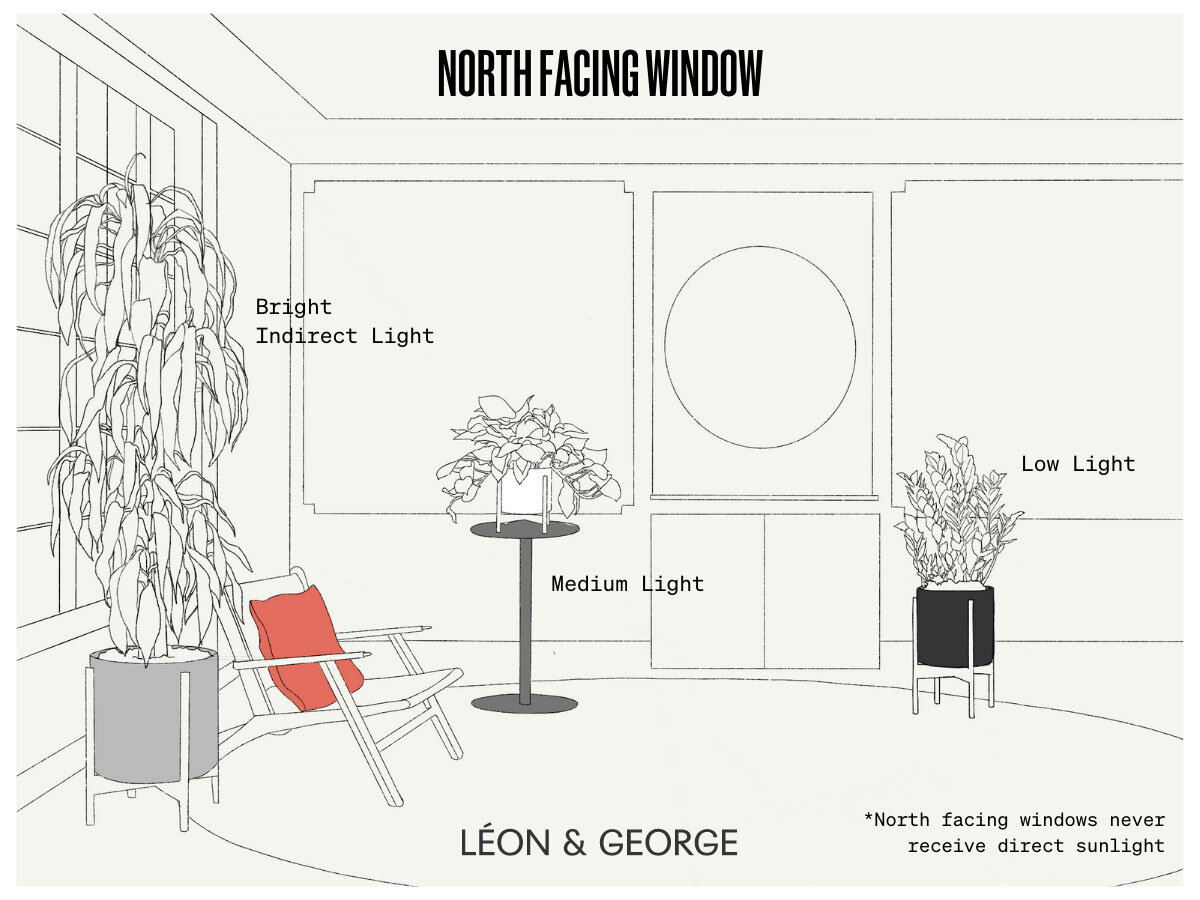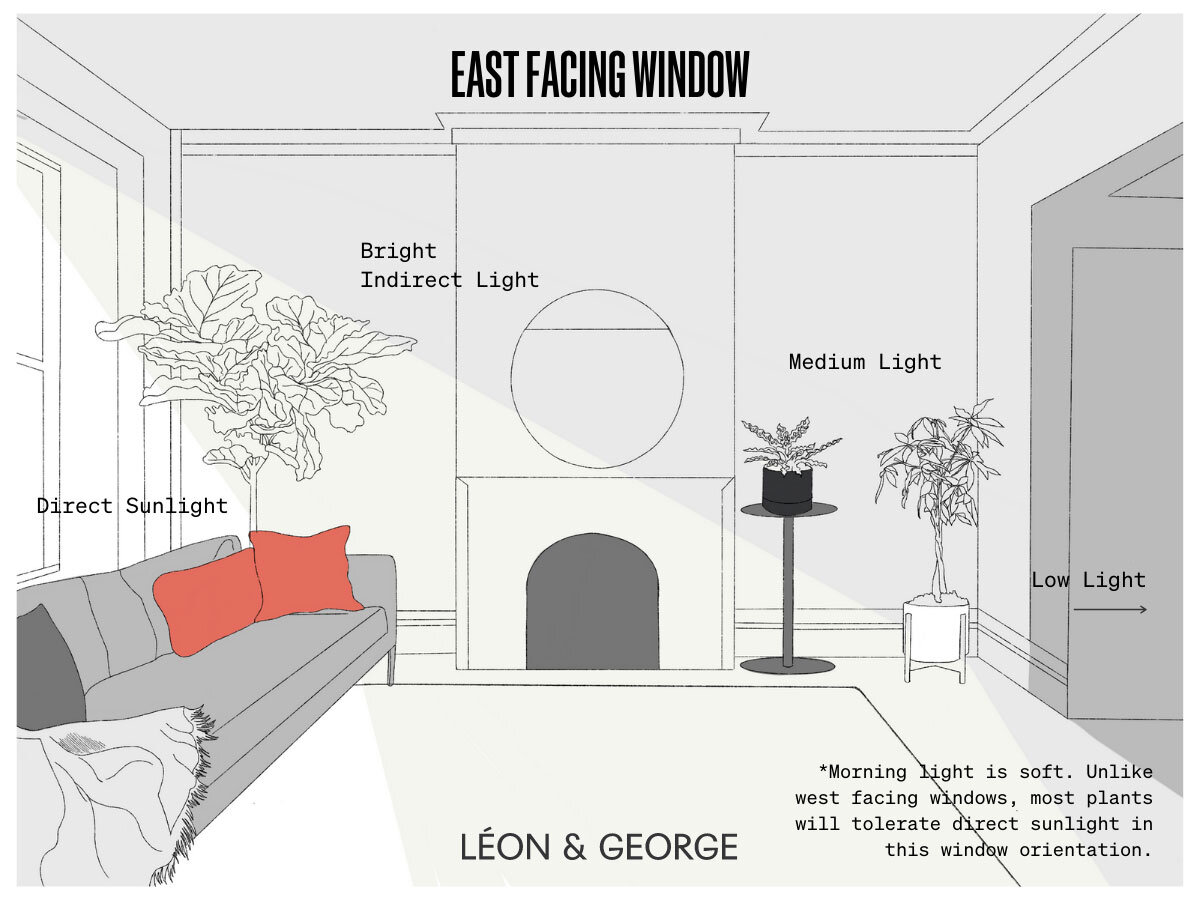Light Requirements for Plants: Explained!
A Definitive Light Guide for Plants
It’s time to welcome a new plant into your home, which means that it’s also time to identify the light your space receives! The number one thing to consider when you select a new plant friend is their light requirement. And we know it can feel a little confusing at first, but don’t fret! This page was specially designed to set you up for success when choosing the right plant for your space. We will identify the light that your space receives, what terms like bright indirect light really mean, and of course, ensure your choice is a perfect match with suggestions for each area of your home.
What is Indirect Sunlight?
What’s the difference between indirect vs. direct light, and what how do green thumbs define low light? While there admittedly isn’t an exact way to define some of these terms, getting a general sense of each will go a long way in selecting the right plant.
Direct Light - The light that comes in through west or southern-facing windows. Direct light is the most intense light that indoor spaces receive, and will expose plants directly to the sun's rays. Most common houseplants don’t love direct sunlight, but a few that can take the heat are Birds of Paradise, Fishtail Palms, cacti and succulents.
Bright Indirect Light - It’s not direct, but it is steady and bright. Think: the spots right next to a window that receives a dash of direct light (but not more than an hour a day) before being obstructed. It’s ideal for plants in this collection.
Medium Light - The areas of a room that are about half the distance between a window and back wall receive medium light. These areas still receive steady light from windows, but it is not direct. This light is ideal for many palms, Dracaenas, Philodendrons, and the plants in our medium light collection.
Low Light - Low light areas are seven or more feet from windows, and can also be places that receive no natural light, like some office spaces and bathrooms. Some plants love low light, and many can adapt to it. Low light plants tend to grow more slowly than other plants, but there is still a wealth of options. Our low light collection is a great trove of shade-loving indoor plants.
Can I Use Artificial Light for my Plants?
The short answer is yes. Artificial light, including indoor grow lighting, is light that is emitted by lightbulbs, and particularly by grow lights. Ordinary lamps and overhead lighting do not offer a lot of light for plants to photosynthesize (though they will still contribute something!), so if the only sources of light are ordinary lamps and overhead lights, you’ll want to select a low light plant. However, if you're keen to discover how to determine your plant light conditions and promote healthy plant growth, grow lights offer light that plants can readily photosynthesize. You can read more about them and other ways to optimize light for your plants here.
Understanding Your Light and Space
What kind of light do you have? A quick way to tell is with a quick hand test. Take a piece of paper or some other plane surface and hold your hand about a foot away from it, between it and the light source. If you can’t see much of a shadow or it’s very faint, you’re getting low light. In a medium light situation you’ll see a blurry or fuzzy shadow of your hand, and in bright light you’ll get a crisp clear shadow.
Knowing what direction your windows face will also be helpful in determining what types of light you’re working with:
North Facing Windows
Windows that face true north do not receive direct sunlight at any time of day (at least in the Northern Hemisphere). They receive consistently diffuse, gentle light. Plants from the Medium Light Collection, like the Dracaena Lisa, Braided Money Tree and Snake Plant will do well when placed four or more feet from north facing windows.
South Facing Windows
South facing windows are the star of any room, because this direction receives the most light throughout the day. The sun rises in the east, and as the planet rotates, the sun’s rays hit south facing windows from the hours of late morning to mid afternoon. South facing windows provide a good deal of bright light for most of the day, so most plants will love being closely situated to this window, especially bright light plants like the Bird of Paradise, Fishtail Palm, and Desert Cactus.
A note on direct sunlight: unobstructed south-facing windows will receive a fair amount of direct sunlight, and most plants don’t love to sit in harsh direct rays of sun. Take care when placing certain plants directly in front of a window that receives lots of direct sunlight.
Live in a super sunny city? Check out our feature on The 10 Sunniest Cities in the U.S. That You Should Move To, where we include tips on which plants to invest in for cities that are sunny all year round.
East Facing Windows
Windows that face east receive sunlight in the morning (the sun rises in the east). Morning light is typically soft, which makes east facing windows a gentle match for plants that appreciate indirect bright light. If you can see the sun rising from your window, that is an east facing window. Plants that like bright, indirect sunlight, like the Fiddle Leaf Fig and Monstera Deliciosa, are great picks for placing near east facing windows.
A note on direct sunlight: morning sunlight is generally a soft light, and most plants will tolerate direct sunlight from east-facing windows. However, if you live in a place that sees lots of sunshine (lucky you!), keep an eye on things in the summer when the sun may become too harsh for plants that otherwise enjoy basking in it during the rest of the year.
West Facing Windows
By midday, the sun is high in the sky and ready to begin its slow descent as it sets in the west. Sunlight will filter through west facing windows from mid afternoon until evening. If you can see the sun set through your window in the afternoon, it is a west-facing window. The light received by west-facing windows is very strong when direct, so most plants should be placed outside the areas where direct sunlight hits. A Braided Money Tree or Tiger Evergreen will benefit from indirect sunlight from this direction, and plants like the Desert Cactus and succulents are some of few that will tolerate west-facing window’s direct sunlight.
You can also utilize landmarks to determine what direction your windows are facing.
Meet Your (Light’s) Match
Shop from this list of our all-time favorite plants for every light requirement. You may notice that some plants are on multiple lists. This is no mistake! Some lucky plants can thrive in varied degrees of indirect light. Braided Money Trees and Snake Plants are among these superstars.
Best Plants for Direct Light
Best plants for bright indirect Light
Best Plants for Medium Light
Best Plants For Low Light
Keep in mind that plants can also be "conditioned" to different light levels, but be careful to do this over a period of a few weeks. A sudden shift in light levels will cause your plant to go through shock.
Signs you haven’t found the sweet spot yet
If you see yellow or dropping leaves or longer spindly stems, this may indicate your plant wants more light. A change of position in the room, a different room, or adding a lamp nearby may be what your plant is looking for.
Noticing pale leaves or crispy browning areas? This may mean your plant needs a step back from too much light or direct light.
Illustrations by our talented Plant Stylist, Kailie Barnes
1 TO 1 VIDEO CALL WITH AN EXPERT
Yellow leaves? Worried about watering or struggling with incorrect lighting? Book a call and get truly personalized support for all your plant-related needs.
Welcome to Léon & George
Discover the joy of indoor gardening with Léon & George, where each houseplant is a living work of art, chosen to create blooming havens in your personal spaces. Our selection of easy-to-grow plants includes everything from the vibrant golden pothos to the sturdy philodendron, all nurtured to promote clean indoor air and enhance the humidity levels of your home.
As purveyors of greenery, we cater to both the enthusiast with a green thumb and the beginner eager to foster their first potted plant. We understand the importance of potting soil that provides optimal drainage, the right fertilizer to encourage growth, and the knowledge on how to propagate and prune to prevent issues like root rot and pests.
In every planter and terrarium, gardening meets style, and house plants become an essential element of home decor. We help you select foliage plants that thrive in variegated light, from bright sunlight to damp corners where air plants might flourish. We offer guidance on watering needs, whether your plants will be potted, repotted, or displayed in chic hanging pots.
And it doesn't stop at succulents and bromeliads; our expansive greenhouse nurtures a collection of tropical plants, ferns, and flowering species like anthuriums and orchids. We make gardening in any space possible, even in urban environments where humidity and sunlight may be challenging to manage.
Join us at Léon & George, and let's cultivate beauty and well-being, one houseplant at a time, turning every nook into a lush, foliage-filled sanctuary.





